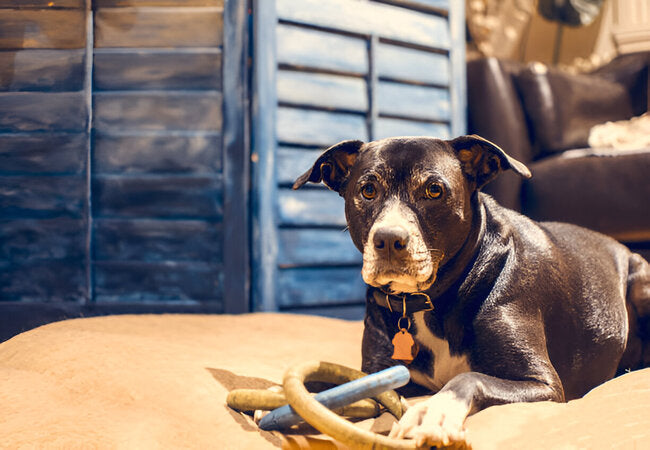Resource Guarding in Dogs in 2025 – Vet‑Approved Guide to Identifying & Managing Possessive Behaviors 🐶🛡️

In this article
Resource Guarding in Dogs in 2025 – Vet‑Approved Guide to Identifying & Managing Possessive Behaviors 🐶🛡️
By Dr. Duncan Houston BVSc
Resource guarding—sometimes called “possessive aggression”—is when a dog uses threat displays (stiffening, barking, growling, snapping) to protect anything they value: food, toys, bones, resting spots—even people. It's a natural instinct, but unmanaged guarding can escalate into biting and become a risk to your household.
🔍 Why It Happens
- Instinctive drive—ancestral behavior to protect resources.
- Anxiety and past scarcity—dogs who experienced resource inconsistency may guard harder.
- Learned fear—if you've taken objects before, dogs may anticipate losing valued items.
- Genetic and temperament traits—some breeds and individual dogs guard more naturally.
⚠️ Warning Signs (Early to Severe)
- Subtle – freezing, stiffening, eating quickly, hovering, hard stare.
- Warning – lip lift, low growl, head-turning.
- Escalation – snapping in the air (air snaps), lunging, biting if pushed.
🛡️ Why It Matters
Even mild guarding can escalate. If ignored or improperly addressed, it may lead to increased aggression or unintended bites.
✅ Prevention & Management
- Environmental control—keep high-value items out of reach and feed separately.
- Teach “trade/drop it”—practise trading items for treats to build trust.
- Don’t forcibly remove possessions—this reinforces guarding as protection.
- Supervise interactions, especially with children or multiple pets around resources.
🧠 Training: Desensitization & Counter-Conditioning
These are proven behavior-modification tools:
- Desensitization—approach calmly while dog eats or chews; only reward calm behavior with high-value treats.
- Counter-conditioning—when the dog has an item, toss in treats so approach = reward.
- Teach “leave it” & “drop it”—crucial cues to defuse guarding situations.
🛠️ Step-by-Step Training Protocol
- Start with low-value items.
- Approach at a safe distance—toss treats in and walk away.
- Gradually decrease distance over time while dog stays calm.
- If dog reacts, step back—don’t push the threshold.
- Repeat frequently with gradual advancement.
- Once comfortable, move to higher-value items like bones/toys.
👥 Real-Life from Reddit
> “Resource guarding of people is quite common … it’s exactly the same as resource guarding of toys/food but the desirable item is human attention.” > “For resource guarding you, you basically get up and walk away. You reward calm behavior by continuing to give attention … then take your attention away if it gets resource guarded.”
🏥 Professional Support Required If:
- Dog is biting or lunging on approach.
- Guarding has generalized—no longer limited to specific items.
- There’s conflict among pets or fear/aggression around people.
📋 Quick Reference Table
| Stage | Action | Goal |
|---|---|---|
| Pre-guarding | Monitor early stress signals | Deter escalation |
| Warning | Stop approach; give space | Build trust |
| Training | Use trade/drop-it and reward calm | Teach safe relinquishing |
| Generalization | Apply across item types | Reduce overall guarding |
📱 Ask A Vet App 2025 Support
Through the Ask A Vet app you can:
- 📹 Upload videos of guarding situations for expert behavior evaluation.
- 🗂 Receive customised desensitization plans and trade protocols.
- 💬 Consult live with a vet or accredited trainer to adapt approaches or add behavioral tools.
Expert support ensures safe, strategic, and confident progress. 🐾📲
❤️ Final Thoughts
Resource guarding is instinctual—but left unchecked, it can escalate. The 2025 strategy is clear: manage the environment, observe warning signs, use respectful training, and seek expert help when needed. With empathy, consistency, and knowledge, dogs can learn trust around their resources—helping everyone in the household feel safe. 🐶🛡️
Need tailored advice? Visit AskAVet.com or download the Ask A Vet app today to begin reshaping your dog’s resource relationships.






